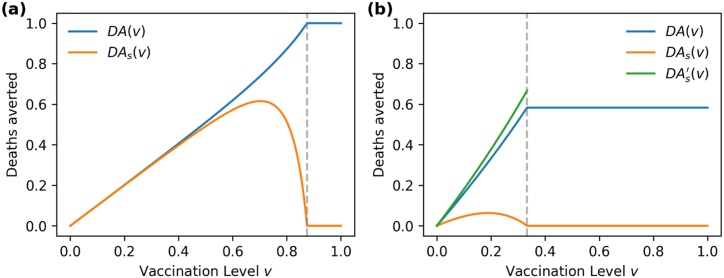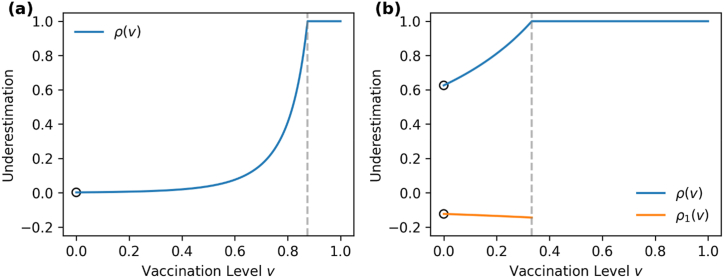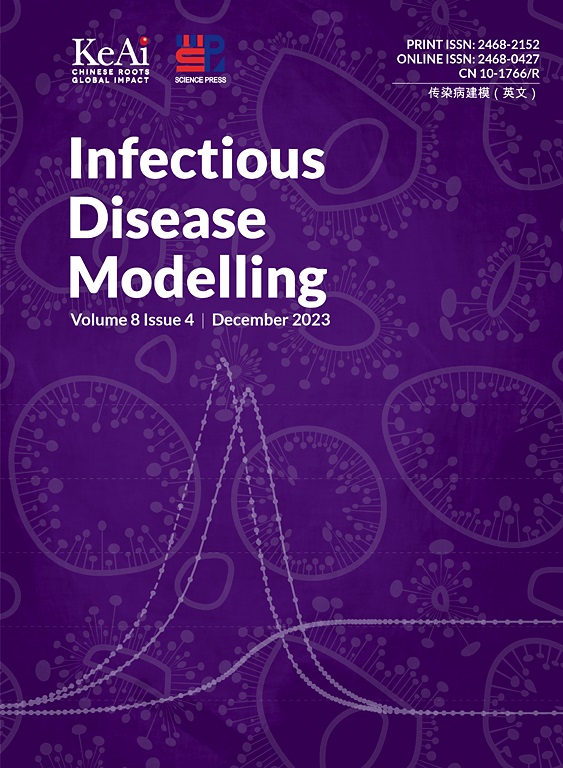Evaluating the effectiveness of vaccination campaigns: Insights from unvaccinated mortality data
IF 2.5
3区 医学
Q1 Medicine
引用次数: 0
Abstract
This paper examines a recently developed statistical approach for evaluating the effectiveness of vaccination campaigns in terms of deaths averted. The statistical approach makes predictions by comparing death rates in the vaccinated and unvaccinated populations. The statistical approach is preferred for its simplicity and straightforwardness, especially when compared to the difficulties involved when fitting the many parameters of a dynamic SIRD-type model, which may even be an impossible task.
We compared the estimated number of deaths averted by the statistical approach to the “ground truth” number of deaths averted in a relatively simple scheme (e.g., constant vaccination, constant , pure SIR dynamics, no age stratification) through mathematical analysis, and quantified the difference and degree of underestimation. The results indicate that the statistical approach consistently produces conservative estimates and will always underestimate the number of deaths averted by the direct effect of vaccination, and thus obviously the combined total effect (direct and indirect effect).
For high values (e.g. 8), the underestimation is relatively small as long as the vaccination level () remains below the herd immunity vaccination threshold. However, for low values (e.g. 1.5), the statistical approach significantly underestimates the number of deaths averted by vaccination, with the underestimation greater than 20%. Applying an approximate correction to the statistical approach, however, can improve the accuracy of estimates for low and low .
In conclusion, the statistical approach can provide reasonable estimates in scenarios involving high values and low , such as during the Omicron variant epidemic in Australia. For low values and low , applying an approximate correction to the statistical approach can lead to more accurate estimates, although there are caveats even for this. These results suggest that the statistical method needs to be used with caution.


评估疫苗接种运动的有效性:来自未接种疫苗死亡率数据的见解。
本文探讨了最近开发的一种统计方法,用于评估疫苗接种活动在避免死亡方面的效果。该统计方法通过比较接种疫苗和未接种疫苗人群的死亡率来进行预测。统计方法因其简单明了而备受青睐,特别是与拟合动态 SIRD 型模型的众多参数所涉及的困难相比,后者甚至可能是一项不可能完成的任务。我们通过数学分析将统计方法估算的避免死亡人数与相对简单方案(如恒定疫苗接种、恒定 R 0、纯 SIR 动态、无年龄分层)中的 "实际 "避免死亡人数进行了比较,并量化了两者之间的差异和低估程度。结果表明,该统计方法始终得出保守的估计值,总是会低估疫苗接种的直接效应所避免的死亡人数,从而明显低估综合总效应(直接效应和间接效应)。对于高 R 0 值(如 R 0 ≥ 8),只要接种水平 ( v ) 始终低于群体免疫接种阈值,低估的程度就相对较小。然而,对于较低的 R 0 值(如 R 0 ≤ 1.5),统计方法明显低估了疫苗接种所避免的死亡人数,低估率超过 20%。不过,对统计方法进行近似修正可以提高低 R 0 和低 v 的估计值的准确性。总之,在高 R 0 值和低 v 的情况下,统计方法可以提供合理的估计值,例如在澳大利亚的 Omicron 变异流行病期间。对于 R 0 值低和 v 值低的情况,对统计方法进行近似校正可以得到更准确的估计值,尽管这也有一些注意事项。这些结果表明,需要谨慎使用统计方法。
本文章由计算机程序翻译,如有差异,请以英文原文为准。
求助全文
约1分钟内获得全文
求助全文
来源期刊

Infectious Disease Modelling
Mathematics-Applied Mathematics
CiteScore
17.00
自引率
3.40%
发文量
73
审稿时长
17 weeks
期刊介绍:
Infectious Disease Modelling is an open access journal that undergoes peer-review. Its main objective is to facilitate research that combines mathematical modelling, retrieval and analysis of infection disease data, and public health decision support. The journal actively encourages original research that improves this interface, as well as review articles that highlight innovative methodologies relevant to data collection, informatics, and policy making in the field of public health.
 求助内容:
求助内容: 应助结果提醒方式:
应助结果提醒方式:


